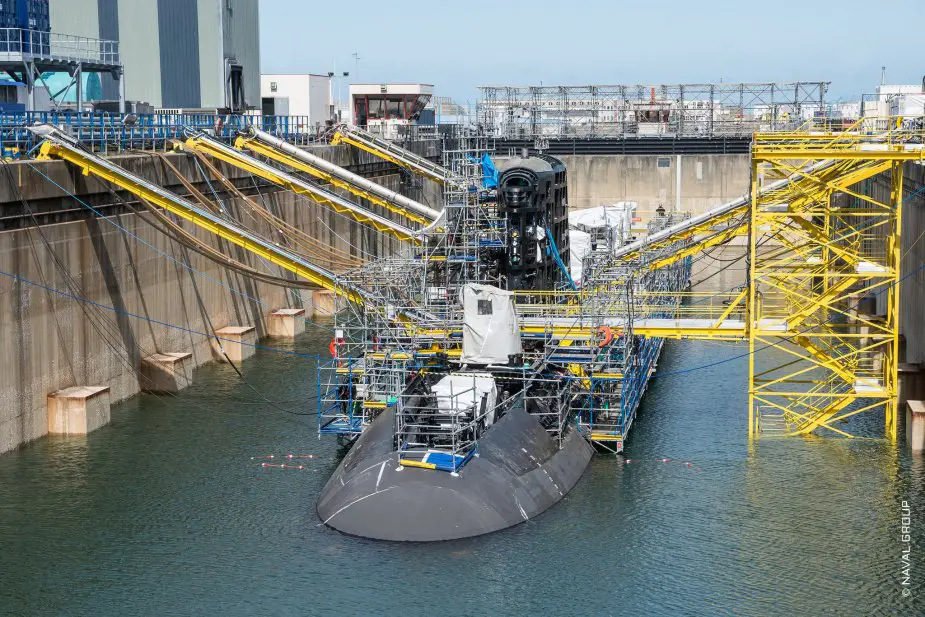Breaking news
French Barracuda class submarine Duguay Trouin reaches new milestone.
According to information published by Opex360 on October 4, 2022, the Barracuda class nuclear attack submarine Duguay-Trouin reached a new milestone, with the start-up of its nuclear reactor.
Follow Navy Recognition on Google News at this link
 French Barracuda class nuclear attack submarine Duguay Trouin. (Picture source: Naval Group)
French Barracuda class nuclear attack submarine Duguay Trouin. (Picture source: Naval Group)
The Barracuda class (or Suffren class) is a nuclear attack submarine, designed by the French shipbuilder Naval Group (formerly known as DCNS and DCN) for the French Navy.
It is intended to replace the Rubis-class submarines. Construction began in 2007 and the first unit was commissioned on 6 November 2020. The lead boat of the class, FS Suffren, officially entered service on 3 June 2022.
In October 1998, the Delegation Générale pour l'Armement, the French government's defense procurement agency, established an integrated project team consisting of the Naval Staff, DCN (now known as Naval Group), Technicatome and the Commissariat a l'Énergie Atomique, a regulatory body that oversees nuclear power plants, to oversee the design of a new attack submarine class.
On 22 December 2006, the French government placed a €7.9 billion order for six Barracuda submarines with Naval Group and their nuclear power plants with Areva-Technicatome.
Barracudas will use technology from the Triomphant class, including pump-jet propulsion. This class reportedly produces approximately 1/1000 of the detectable noise of the Redoutable-class boats, and they are ten times more sensitive in detecting other submarines.
The submarines will have a length of 99.5 m (326 ft), a beam of 8.8 m (29 ft), and a draught of 7.3 m (24 ft). They can reach a top speed of 25 knots (46 km/h; 29 mph).
They will be fitted with torpedo-tube-launched MdCN cruise missiles for long-range (well above 1,000 km, 620 mi) strikes against strategic land targets. Their missions will include anti-surface and anti-submarine warfare, land attack, intelligence gathering, crisis management and special operations.
The Barracuda class nuclear reactor incorporates several improvements over that of the preceding Rubis. Notably, it extends the time between refueling and complex overhauls (RCOHs) from 7 to 10 years, enabling higher at-sea availability.
In support of special operations missions, Barracudas may also accommodate up to 15 commandos, while carrying their equipment in a mobile pod attached aft of the sail.


























